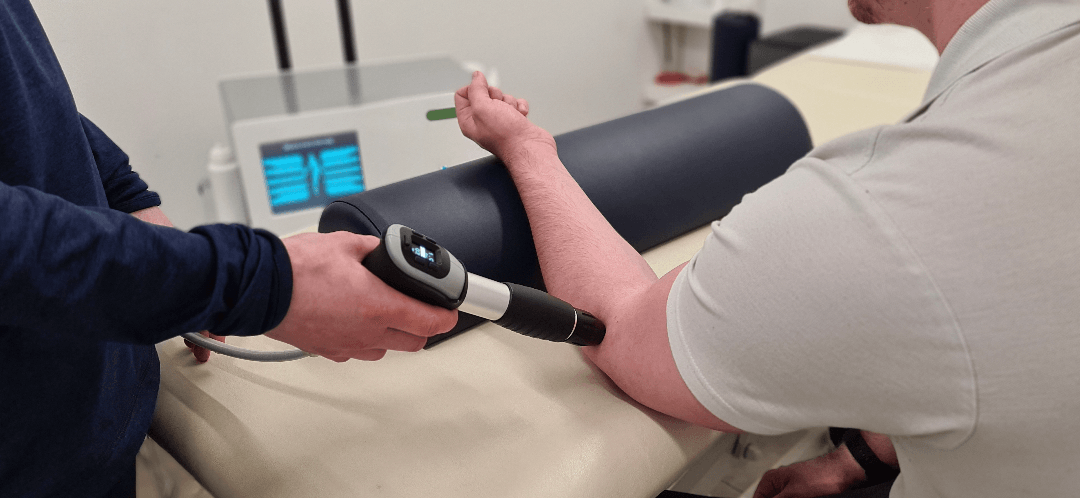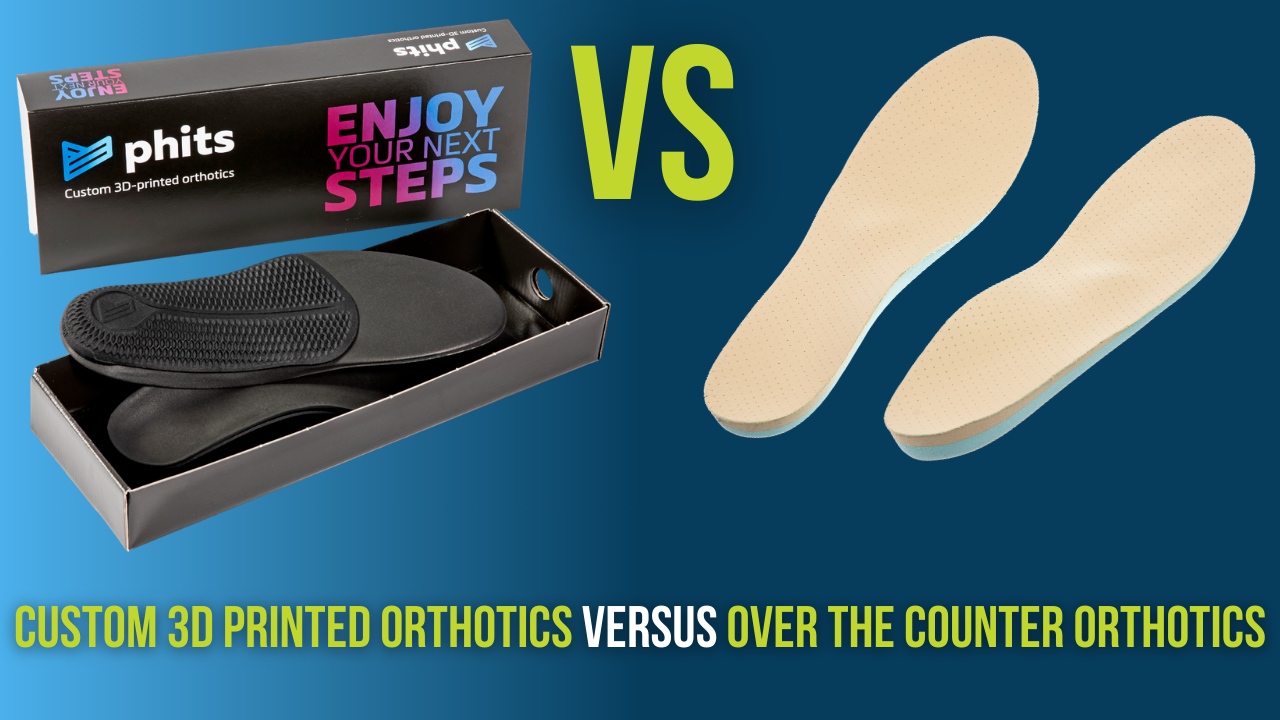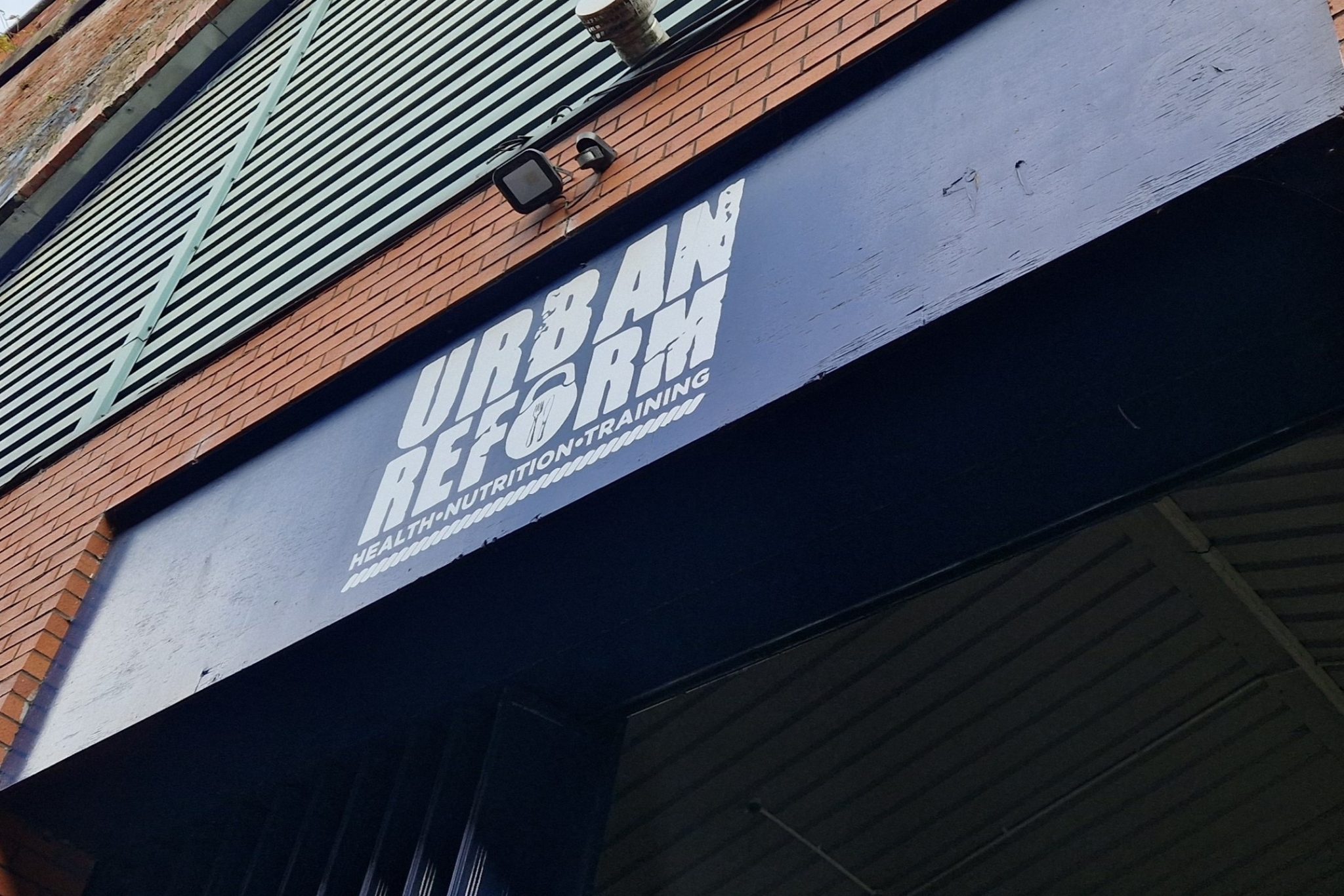the Power of Shockwave Therapy: A Revolutionary Physiotherapy Modality
Shockwave therapy treatment modality that stimulates the body's natural healing process. It has been gaining popularity in the field of physiotherapy as an alternative treatment for musculoskeletal issues such as tendonitis, plantar fasciitis, and chronic pain.
The rising demand for alternative therapies stems from the limitations of traditional treatments and the desire for more effective and efficient solutions. Shockwave therapy offers a promising option for patients seeking relief from musculoskeletal conditions without the need for surgery or medication. Here we provide a comprehensive overview of shockwave therapy, including; how it works and it’s benefits, potential side-effects, and effectiveness in treating various musculoskeletal disorders.
Understanding Shockwave Therapy:
Shockwave therapy is a non-invasive treatment modality that is increasing in popularity amongst healthcare professionals for its effectiveness in treating various musculoskeletal conditions. This innovative therapy utilises high-energy acoustic waves to stimulate the body’s natural healing process and promote tissue regeneration.
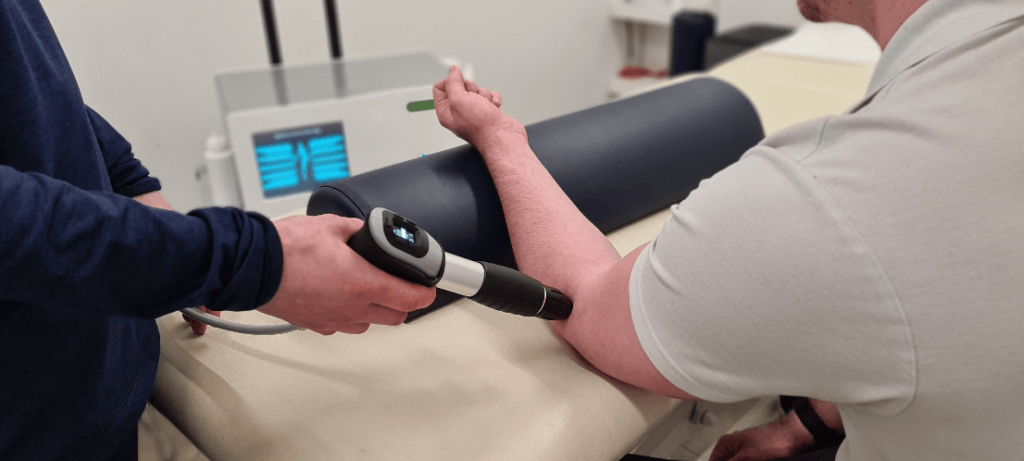
The Treatment PRocess:
Shockwave therapy involves the delivery of acoustic waves to the affected area, where they create microtrauma in the tissues. This microtrauma triggers a cascade of biological responses, including increased blood flow, neovascularisation, and the release of growth factors that promote tissue repair and regeneration. Additionally, shockwaves have been shown to disrupt pain signals and reduce inflammation, leading to pain relief and improved function.
TYPES OF SHOCKWAVE THERAPY:
There are two main types of shockwave therapy: focused shockwave therapy and radial shockwave therapy.
Focused shockwave therapy delivers high-energy acoustic waves to a specific point in the body, targeting the affected area with precision. This type of therapy is commonly used for conditions such as tendonitis, plantar fasciitis, and calcific shoulder tendinitis.
On the other hand, radial shockwave therapy disperses lower-energy acoustic waves over a larger area, making it suitable for treating broader areas of tissue damage and promoting overall healing.
HOW IT WORKS:
When shockwaves interact with tissues, they create mechanical stress that stimulates the production of new blood vessels and enhances blood flow to the affected area. This increased blood flow delivers oxygen and nutrients to the tissues, promoting healing and reducing inflammation. Additionally, shockwaves have been shown to stimulate the release of growth factors, such as vascular endothelial growth factor (VEGF) and transforming growth factor-beta (TGF-β), which play a crucial role in tissue repair and regeneration.
Furthermore, shockwaves have been found to disrupt pain signals by overstimulating nerve fibres in the affected area, leading to a temporary reduction in pain perception. This analgesic effect can provide immediate relief for patients suffering from chronic pain conditions. Additionally, shockwave therapy has been shown to modulate the activity of pain receptors and reduce the production of inflammatory mediators, further contributing to pain relief and improved function.
Shockwave therapy is a promising treatment modality for musculoskeletal conditions that offers a non-invasive and effective alternative to traditional therapies. By understanding the mechanism of action of shockwaves and their interaction with tissues, practitioners can harness the therapeutic benefits of this innovative therapy to promote healing, reduce pain, and improve outcomes.
Conditions Treated with Shockwave Therapy:
Shockwave therapy has been increasingly recognised as an effective treatment modality for a variety of musculoskeletal conditions. Below is a comprehensive list of musculoskeletal conditions that can be effectively treated with shockwave therapy:
Plantar fasciitis
Plantar fasciitis is a common condition characterised by heel pain caused by inflammation of the plantar fascia. Several studies have shown that shockwave therapy can significantly reduce pain and improve function in patients with plantar fasciitis. The high-energy acoustic waves stimulate blood flow and promote tissue regeneration, leading to pain relief and improved healing.
achilles tendinopathy
Achilles tendinopathy is a degenerative condition of the Achilles tendon that causes pain and stiffness in the back of the heel. Research has demonstrated that shockwave therapy can effectively reduce pain and improve function in patients with Achilles tendinopathy. The treatment helps to break down scar tissue, stimulate collagen production, and promote tendon healing.
tennis elbow
Lateral Epicondylitis better known as tennis elbow is a common overuse injury that causes pain and tenderness on the outer side of the elbow. Studies have shown that shockwave therapy can provide significant pain relief and improve grip strength in patients with tennis elbow. The treatment helps to reduce inflammation, promote tissue repair, and enhance blood flow to the affected area.
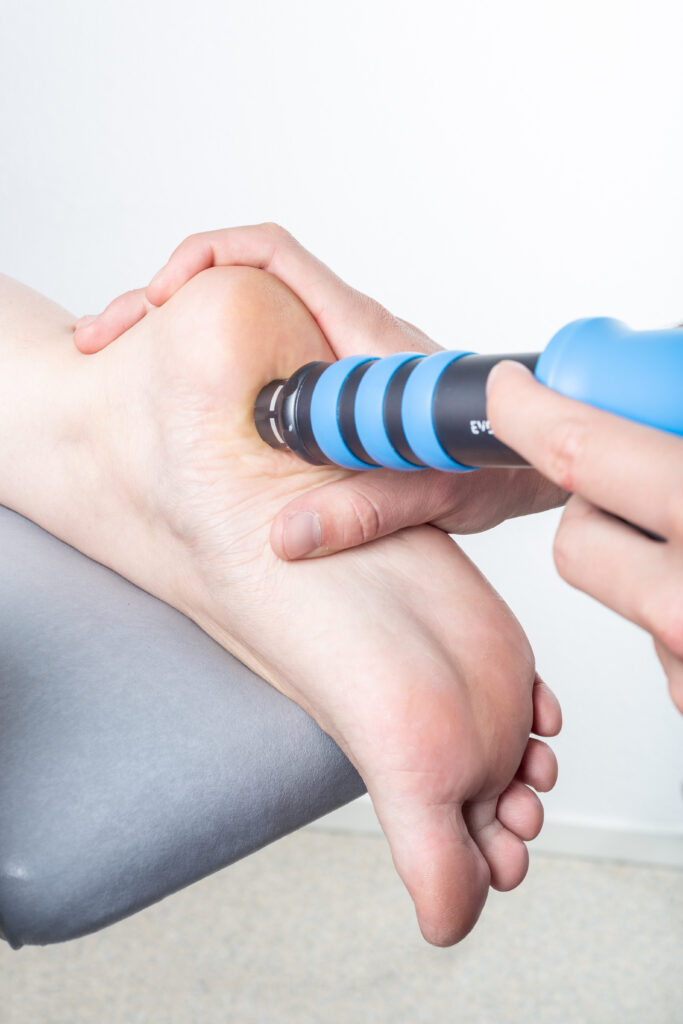
rotator cuff tendinopathy
Rotator cuff tendinopathy is a common shoulder condition characterised by pain and weakness in the shoulder joint. Evidence suggests that shockwave therapy can effectively reduce pain and improve shoulder function in patients with rotator cuff tendinopathy. The treatment helps to stimulate collagen production, enhance tissue healing, and improve range of motion in the shoulder.
patellar tendinopathy
Patellar tendinopathy, also known as jumper’s knee, is a condition that causes pain and stiffness in the patellar tendon. Research has shown that shockwave therapy can be an effective treatment option for patellar tendinopathy, leading to reduced pain and improved function in the knee. The treatment helps to promote tendon healing, reduce inflammation, and enhance tissue regeneration.
Shockwave Therapy Benefits/outcomes:
Shockwave therapy offers several advantages over traditional treatment modalities such as surgery or medication when it comes to addressing musculoskeletal issues.
non-invasive:
One of the key benefits of shockwave therapy is its non-invasive nature, which eliminates the need for surgical procedures that come with inherent risks and longer recovery times. By using high-energy acoustic waves to target the affected area, shockwave therapy stimulates the body’s natural healing process without the need for incisions or anesthesia, making it a safer and more convenient option for patients.
ACCELERATED RECOVERY:
In addition to being non-invasive, shockwave therapy can also accelerate recovery time and improve overall outcomes compared to traditional treatments. The high-energy acoustic waves used in shockwave therapy help to increase blood flow to the affected area, promoting tissue regeneration and reducing inflammation. This can lead to faster healing and improved function, allowing patients to return to their normal activities sooner than with conventional treatments. By targeting the root cause of the musculoskeletal issue, shockwave therapy can also provide long-lasting relief and prevent the need for ongoing medication or repeated surgeries.
PROMISING ALTERNATIVE:
Overall, shockwave therapy presents a promising alternative to traditional treatment modalities for musculoskeletal issues, offering a non-invasive, effective, and safe option for patients seeking relief from chronic pain and injuries. By exploring the advantages of shockwave therapy over surgery or medication, discussing its potential to accelerate recovery time and improve outcomes, and addressing any potential risks or side effects, patients can make informed decisions about incorporating this innovative treatment approach.
SIde-EFFECTS:
While shockwave therapy offers many benefits, it is important to consider potential risks or side effects associated with this treatment modality. Some patients may experience mild discomfort or bruising at the treatment site, which typically resolves within a few days.
The Role of Shockwave Therapy at Summit Physio:
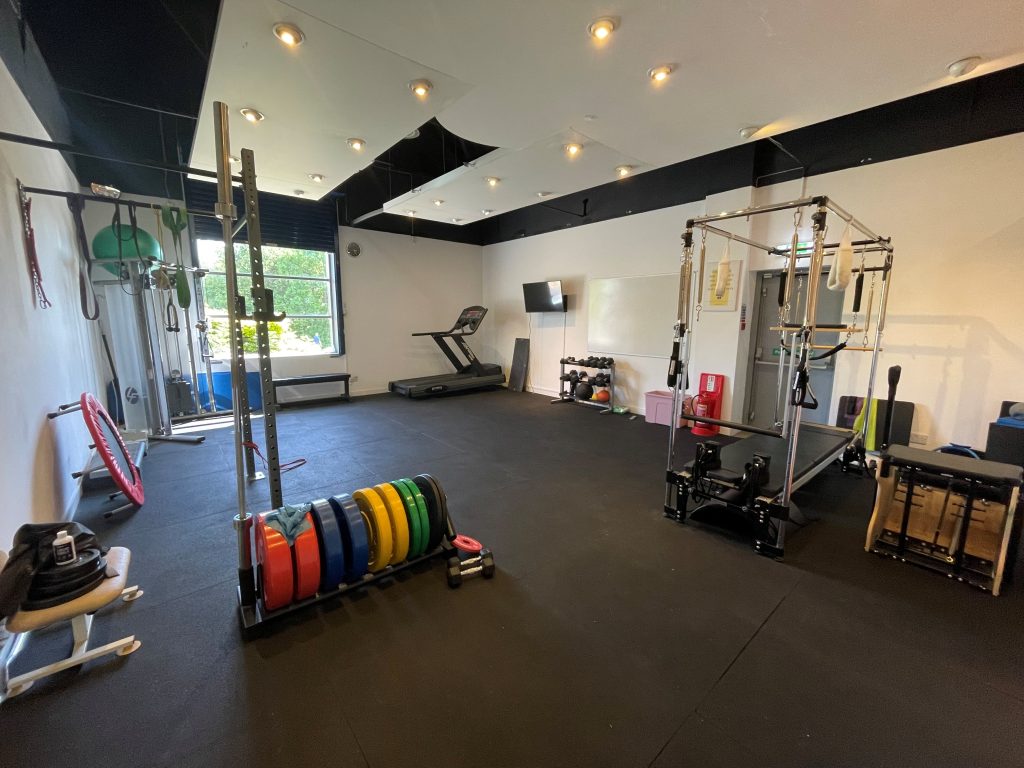
Here, at Summit Physio, we believe that integration of shockwave therapy with other physiotherapy modalities, such as exercise therapy and manual therapy, can offer a comprehensive approach to treating musculoskeletal conditions. By combining these modalities, practitioners can address different aspects of a patient’s condition and enhance the overall effectiveness of the treatment plan.
Exercise therapy plays a crucial role in rehabilitation by improving strength, flexibility, and mobility. When combined with shockwave therapy, exercises can help optimise the healing process, prevent re-injury, and improve overall functional outcomes. Practitioners may prescribe specific exercises tailored to the patient’s condition and goals, working in conjunction with shockwave therapy to achieve optimal results.
Manual therapy, on the other hand, involves hands-on techniques such as massage, joint mobilisation, and manipulation to alleviate pain, improve joint function, and restore tissue mobility. When integrated with shockwave therapy, manual therapy techniques can help address soft tissue restrictions, joint dysfunctions, and muscle imbalances, complementing the effects of shockwave therapy and promoting faster recovery.
Individualised treatment plans are essential to address each patient’s unique needs, goals, and preferences. By tailoring treatment approaches to specific patient characteristics, such as age, fitness level, medical history, and treatment response, practitioners can optimise outcomes and ensure a personalised and effective rehabilitation process. This personalised approach allows for adjustments in treatment intensity, frequency, and duration based on individual progress and feedback, leading to better patient satisfaction and long-term success in managing musculoskeletal conditions.
If you wish to seek further help or speak to a practitioner about any of the above, call us on 0800 731 2738 or book online here.
You can also view all the services we provide within our clinics on our website, as well as checking out our other blogs and content.
For more free tips and information, make sure to follow our Facebook and Instagram pages. We also post client stories, so you can see how we’ve helped people get back to doing the things they enjoy!
